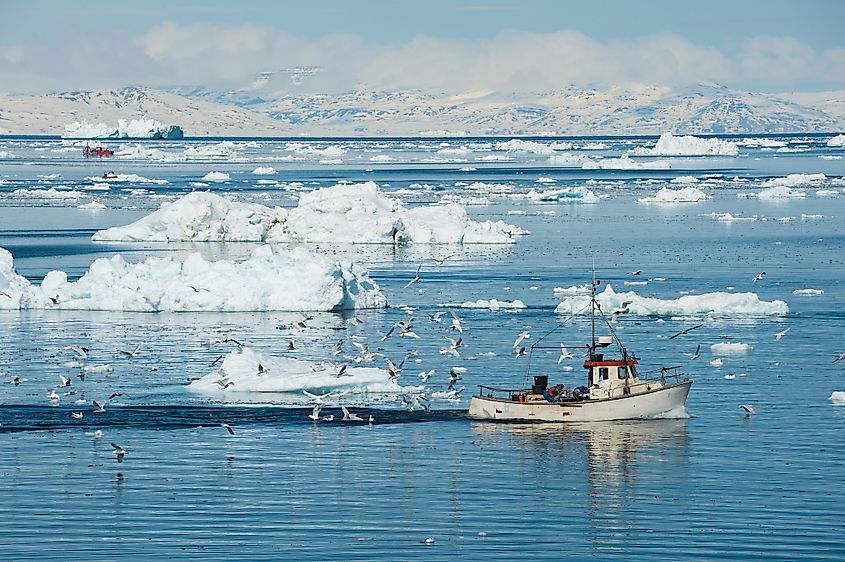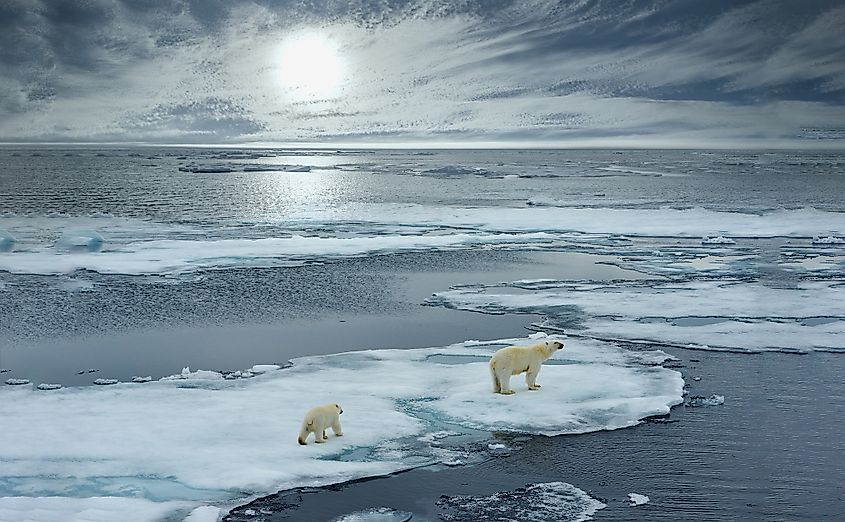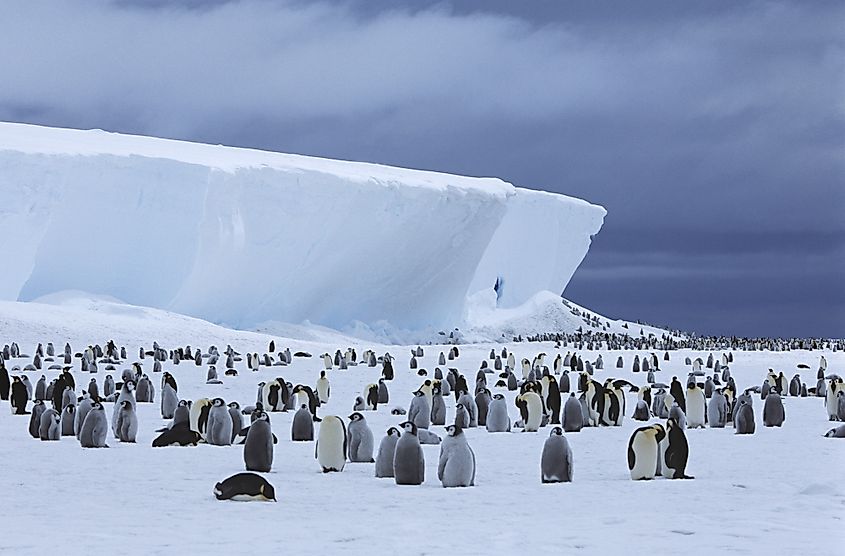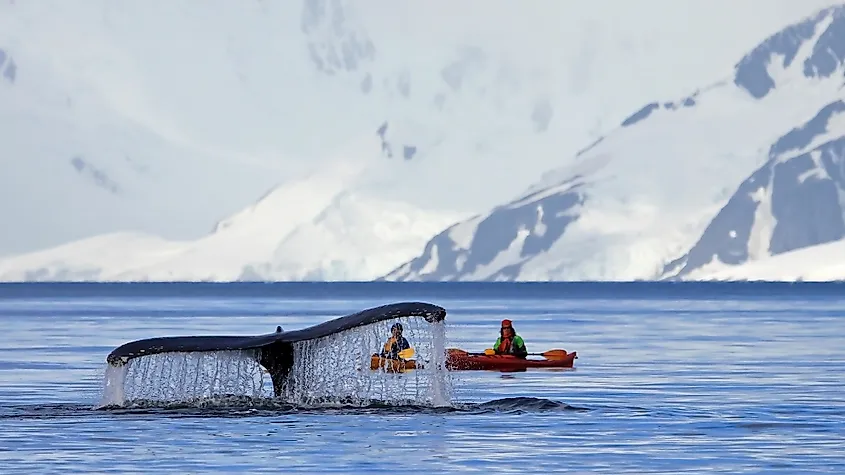
Arctic Vs. Antarctic
The Arctic is the northernmost region of the Earth that features a large ocean covered by a thin layer of perennial sea ice and is almost entirely surrounded by land. In contrast, the Antarctic region comprises the continent of Antarctica - the Earth’s southernmost and fifth-largest continent and the Southern Ocean that surrounds it. The Arctic and Antarctic regions are considered the most incredible, darkest, and iciest areas of the planet, but the similarities end here.

The Arctic Region
The name ‘Arctic’ has been derived from the Greek word ‘arktos,’ which means ‘bear’ and refers to the Ursa Major (Great Bear) and Ursa Minor (Little Bear) constellations seen in the Northern sky. Scientists define the Arctic as a region north of the Arctic Circle consisting of the Arctic Ocean, many adjacent seas, and parts of Alaska, Greenland, Finland, Canada, Norway, Iceland, Sweden, and Russia. Approximately 4 million people, including many indigenous communities such as Inuits, Sami, Yakuts, etc., live in the Arctic region.

The Arctic region consists of a large ocean, the Arctic Ocean, surrounded by land. Due to this geographical feature, the sea ice that forms in the Arctic region is comparatively less mobile than the sea ice in the Antarctic region. The sea ice moves at a much slower pace and tends to stay in the cold Arctic waters. Besides this, the sea ice in the Arctic region is much thicker than in the Antarctic region. In the Arctic, the sea ice is about 2m to 3m thick, although, in some places of the Arctic, the sea ice reaches a thickness of about 4m to 5m. The floes that form here converge and pile up into thick ridges making the Arctic ice thicker. During winter, about 15 million sq. km of sea ice is found, while only 7 million sq. km of ice remains by the end of the summer season.
The bright surface of the Arctic sea-ice acts as a vast white reflector at the top of the Earth that reflects some of the sun’s rays into space and helps to balance the planet’s climate. The Arctic region also helps to circulate the world’s ocean currents and moves the warm and cold waters around the globe. Studies have revealed that there has been a drastic environmental change in the Arctic over the past few years due to anthropogenic climate change. It is believed that the Arctic region has warmed about twice as fast as the rest of the world, and it is expected that in a few years, the Arctic region will be predominantly sea ice-free during the summer months.

A greater number of animals are found in the Arctic region compared to the Antarctic. Some of the notable animals found in the Arctic region include Arctic hare, Arctic wolf, muskox, Arctic fox, polar bears, lemmings, caribou, seals, walruses, and many species of whales like the narwhal, killer whale, beluga, and bowhead. The polar bears depend on the Arctic sea ice to access the seals, which are their primary food source, and to rest and breed. With the decreasing sea ice every year, polar bears and many other sea ice-dependent creatures face extreme risk. The shrinking sea ice also forces the polar bears to spend more time on the land, resulting in conflicts with the people living in the Arctic region.
Antarctica

The name ‘Antarctica’ has been derived from a Roman version of the Greek word ‘antarktike,’ which means ‘opposite to the Arctic.’ As mentioned above, Antarctica is a vast continent situated south of the Antarctic Circle and surrounded by the Southern Ocean. This open ocean surrounding the large Antarctic landmass allows the sea ice to move more freely here than in the Arctic. The ocean also creates more precipitation, so the Antarctic region has more snow cover than the Arctic. The Antarctic ice sheet covers about 98% of Antarctica, and the Antarctic sea ice has an average thickness of 1.6 m. Almost all the sea ice that forms here during winter melts during the summer. During winter, up to 18 million sq. km of the ocean is covered by sea ice, but only about 3 million sq. km of the ocean is covered by sea ice by the end of summer season. A lesser number of animals are found in the Antarctic region compared to the Arctic.

Some of the notable animals found in the Antarctic area include blue whales, southern elephant seals, leopard seals, killer whales, colossal squid, etc. Emperor penguins are the only penguins that breed in the Antarctic region during the winter season. The Antarctic midge is the largest purely terrestrial animal that is native to the continent of Antarctica. Due to the extremely harsh climatic conditions, the Antarctic region has no permanent population. Only about 1000 to 5000 people from various countries live in the research stations that are scattered throughout Antarctica.











